ノーベル文学賞の候補として世界にその名を轟かせた文豪が、なぜ迷彩服を身にまとい、自衛隊の駐屯地で壮絶な最期を遂げたのか。三島由紀夫という名は、戦後日本文学の金字塔であると同時に、今なお多くの謎と議論を呼び起こす強烈な磁力を放っています。彼の人生は、繊細な言葉を紡ぐ芸術家と、鋼の肉体を求める行動家という、相容れない二つの顔がせめぎ合う舞台そのものでした。
- 「仮面」の告白から始まった文学: 彼の作品は、人間の内面に潜む欲望や葛藤を、宝石のように研ぎ澄まされた言葉で描き出し、世界中の読者を魅了しました。その文学の根源には何があったのでしょうか。
- ペンを剣に持ち替えて: なぜ彼は華やかな文学サロンを飛び出し、ボディビルに没頭し、ついには自らの民兵組織「楯の会」を結成するに至ったのか。その「文武両道」の思想の先に何を見ていたのでしょうか。
- 1970年11月25日の衝撃: 市ヶ谷駐屯地でのあの事件は、単なる政治的な行動だったのでしょうか。それとも、彼の生涯を賭けた美学の集大成、究極の「作品」だったのでしょうか。
早熟の天才、その光と影
三島由紀夫、本名・平岡公威は、1925年に東京の裕福なエリート家庭に生を受けました。祖母の影響下で育った少年時代、彼は病弱で、外で遊ぶよりも部屋で本を読むことを好む、感受性の鋭い子供でした。学習院では常にトップクラスの成績を誇り、その早熟な文才は10代の頃から注目を集め、すでにいくつかの短編を発表しています。
しかし、その華やかな経歴の裏で、彼は自らの内面に渦巻く複雑な感情や性的指向に人知れず苦悩していました。太平洋戦争の時代、彼が抱いたのは、死へのロマンティックな憧れと、生き残ってしまったことへの漠然とした罪悪感でした。この戦時下の体験と、自らの内面にある「他者とは違う何か」を言葉にしようとする切実な欲求が、彼の文学の原点となります。1949年、自伝的要素の濃い『仮面の告白』を発表。その衝撃的な内容で、彼は一躍文壇の寵児となりました。
世界が認めた文豪の誕生
『仮面の告白』での鮮烈なデビュー以降、三島の創作意欲は爆発します。ギリシャの牧歌的な恋愛を描いた『潮騒』、美の象徴である金閣寺を放火する青年の倒錯した心理を克明に描いた『金閣寺』、戦後の若者たちの虚無と退廃を描いた『鏡子の家』など、その作風は多岐にわたり、次々と傑作を生み出しました。
彼の文章は、西洋文学の教養に裏打ちされた緻密な構成と、日本語の美しさを極限まで追求した絢爛豪華な表現で、国内外から絶賛を浴びます。彼は戦後日本を代表する作家として国際的な名声を確立し、ノーベル文学賞の候補にも三度名前が挙がるほどでした。まさに、彼はペン一本で文学界の頂点に上り詰めたのです。
肉体という言語への傾倒
しかし、30歳を迎えた頃から、三島の関心は大きな転換期を迎えます。それまで言葉という知的な世界で生きてきた彼が、突如として「肉体」の改造に目覚めたのです。きっかけは、ボディビルでした。彼は、ギリシャ彫刻のような均整の取れた肉体美を理想とし、猛烈なトレーニングに励みます。ひ弱だった青年は、誰もが目を見張るほどの鋼の肉体を持つ男へと変貌を遂げました。
この肉体への傾倒は、単なる健康法や趣味ではありませんでした。彼は、言葉だけでは到達できない精神の高みがあると考え、「文武両道」を自らの信条として掲げます。剣道にも精を出し、ついには私財を投じて、学生を中心とした民兵組織「楯の会」を結成。共に軍事訓練に励むようになります。この頃から、彼の言動には戦後日本の平和と繁栄に対する違和感や、日本の精神的支柱であったはずの天皇のあり方に対する憂いが色濃く表れるようになります。
市ヶ谷、そして伝説へ
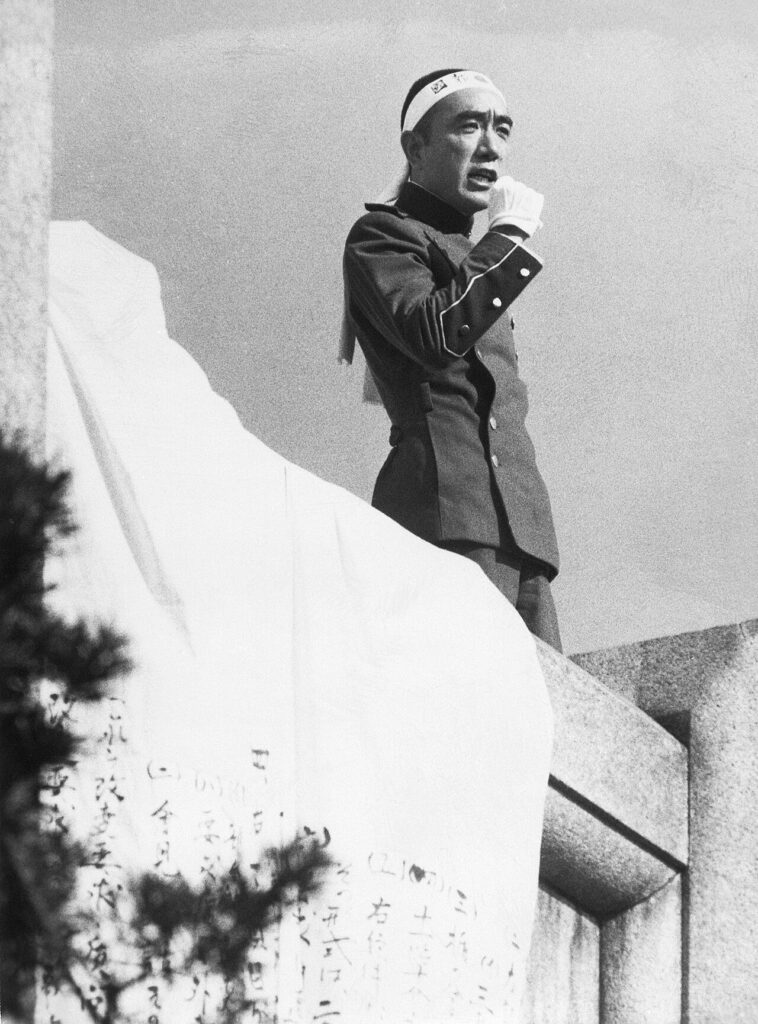
そして、1970年11月25日。三島由紀夫は、彼の生涯の集大成と位置づける大作『豊饒の海』四部作の最終巻の原稿を編集者に渡したその日に、運命の行動を起こします。
「楯の会」のメンバー4名と共に、東京・市ヶ谷の陸上自衛隊駐屯地を訪れ、総監を人質に取ってバルコニーを占拠。集まった自衛官たちを前に、日本の真の独立と憲法改正を訴える演説を行いました。しかし、彼の悲痛な叫びはヤジにかき消され、聞き入れられることはありませんでした。演説を終えた三島は総監室に戻り、日本の伝統的な作法に則って割腹自決。その壮絶な死は、日本中に、そして世界中に大きな衝撃を与えました。
彼の死は、今なお「三島事件」として語り継がれ、その真意を巡って無数の解釈や議論を生み続けています。彼は、ただ伝説となったのです。
解説ポイント①:言葉で築かれた美の世界
三島由紀夫の文学の核心には、常に「美」というテーマが存在しました。しかし、彼が描く「美」は、単に調和の取れた美しいものではありませんでした。
- 『仮面の告白』に見る自己暴露の美学: この作品で彼は、自らのセクシュアリティや死への憧憬といった、社会のタブーとされる内面を赤裸々に告白しました。彼にとって、偽りの仮面を剥ぎ取り、隠された真実を公にさらけ出すこと自体が、一つの痛々しい美の形だったのです。
- 『金閣寺』における破壊と嫉妬の美学: 国宝である金閣寺の美しさに魅了され、その美と一体化したいと願うあまり、最終的にそれを破壊する道を選ぶ若い学僧の物語。ここでは、「完璧な美は、存在し続けることによって不純になっていく。だからこそ、その頂点で破壊されなければならない」という、倒錯的でありながらも強烈な美学が描かれています。
- 『豊饒の海』での輪廻転生の壮大な美学: 彼のライフワークとなったこの四部作は、明治時代から昭和に至る日本の近代史を背景に、魂が何度も生まれ変わる輪廻転生の物語です。時代の移ろいの中で、変わるものと変わらないもの、そして滅びゆくものの儚い美しさを壮大なスケールで描き切りました。
これらの作品を通じて、三島は人間の内面に潜む光と影、生と死、創造と破壊といった普遍的なテーマを、比類なき言語芸術へと昇華させたのです。
解説ポイント②:「文武両道」という名の自己改造
なぜ、言葉の魔術師であった三島が、あれほどまでに肉体の鍛錬に執着したのでしょうか。その根底には、彼が抱いていた「言葉への不信」と「肉体への憧憬」がありました。
彼は、言葉がいかに精緻であっても、それは観念の産物であり、現実を変える力を持たないのではないかという無力感を抱いていました。一方で、鍛え上げられた肉体は、意思の力、行動、そして存在そのものを雄弁に物語る「もう一つの言語」でした。彼にとって、ボディビルや剣道は、単なる体力づくりではなく、精神を鍛え、意思を肉体に刻み込むための儀式だったのです。
この「文武両道」の思想は、古代ギリシャや日本の武士道に理想を見出していました。知性(文)と行動(武)が一体となって初めて、人間は完全な存在になれる。彼は自らの肉体を実験台として、この理想を極限まで追求しようとしました。ひ弱な文学青年だった過去の自分を完全に否定し、鋼の肉体を持つ戦士へと自己を改造していくプロセスそのものが、彼にとっての一大叙事詩であり、芸術的行為だったと言えるでしょう。
解説ポイント③:謎に満ちた最期―事件の多層性
1970年の市ヶ谷事件は、様々な角度から解釈することが可能です。表面的には、自衛隊に決起を促し、憲法改正を訴えるという政治的クーデターの呼びかけでした。しかし、その行動には、より深く多層的な意味が込められていたと指摘されています。
- 憂国の思想家として: 三島は、戦後の日本が経済的繁栄と引き換えに、本来の「魂」や「誇り」を失ってしまったと深く憂いていました。彼の行動は、物質主義に堕した戦後日本社会への痛烈な批判であり、警鐘でした。
- 天皇への思い: 彼は、日本の精神的支柱として「天皇」の存在を重視していました。戦後、象徴としてその役割が変化した天皇のあり方に心を痛め、自らの命を賭してその本来あるべき姿を問いかけた、という側面も指摘されています。
- 美学の完成者として: 最も重要なのは、この事件が彼の「美学」の最終的な表現であったという見方です。彼は、人間の生が最も輝く瞬間は「死」にあると考えていました。『金閣寺』で描かれたように、完璧な美は滅びの瞬間にこそ完成する。自らの人生の幕引きを、大義に殉じるという最も劇的な形で演出し、45歳という若さと肉体の頂点で自らの死を「作品化」した、という解釈です。
これらの要素が複雑に絡み合い、三島由紀夫の最期を単なる政治事件ではなく、今なお人々を惹きつけてやまない壮大な謎として位置付けているのです。
参考文献
- 新潮社 – 三島由紀夫 著者プロフィール
- 山中湖文学の森 三島由紀夫文学館 – 三島由紀夫の生涯
- NHK アーカイブス – 三島由紀夫 割腹自殺 “三島事件”
- 文春オンライン – 「おのが肉体と精神のありかを知らぬやつは、おとこではない」三島由紀夫の“最後の言葉”
- 集英社オンライン – ノーベル文学賞候補だった三島由紀夫がなぜ自決しなければならなかったのか。その“最後の2年間”の心境に迫る
【English Article】
The Man Who Embodied “The Pen is Mightier Than the Sword”: Why Did Yukio Mishima Choose Suicide?
How did a literary giant, lauded globally as a Nobel Prize candidate, end up in a military uniform, meeting a dramatic end at a Self-Defense Force garrison? The name Yukio Mishima stands as a pinnacle of postwar Japanese literature, yet it also radiates a powerful magnetism, sparking countless mysteries and debates even today. His life was a stage where two conflicting personas—an artist weaving delicate words and an activist forging a body of steel—vied for dominance.
- Literature Born from “Confessions of a Mask”: His works captivated readers worldwide by depicting the desires and conflicts lurking within the human psyche with prose polished like a gemstone. What lay at the root of his literature?
- Exchanging the Pen for the Sword: Why did he leap from glamorous literary circles to immerse himself in bodybuilding, eventually forming his own private militia, the “Tatenokai” (Shield Society)? What did he envision beyond his philosophy of “Bunbu Ryodo” (the unity of literary and martial arts)?
- The Shock of November 25, 1970: Was the incident at the Ichigaya Garrison merely a political act? Or was it the culmination of his lifelong aesthetic, his ultimate “work of art”?
An Early Genius: His Light and Shadow
Yukio Mishima, born Kimitake Hiraoka in 1925, came from a prosperous elite family in Tokyo. Raised under the influence of his grandmother, he was a frail and sensitive child who preferred reading indoors to playing outside. He consistently excelled at the Gakushuin (Peers’ School), and his precocious literary talent drew attention from his teenage years, having already published several short stories.
However, behind this brilliant façade, he secretly agonized over the complex emotions and sexual orientation swirling within him. During the Pacific War, he harbored a romantic longing for death and a vague guilt for having survived. This wartime experience, coupled with a desperate urge to put into words the “something different” within him, became the origin of his literature. In 1949, he published the highly autobiographical “Confessions of a Mask.” Its shocking content instantly made him a darling of the literary world.
The Birth of a World-Renowned Author
Following his sensational debut with “Confessions of a Mask,” Mishima’s creative drive exploded. He produced one masterpiece after another, his style varying widely: “The Sound of Waves,” a pastoral romance set in Greece; “The Temple of the Golden Pavilion,” a meticulous portrayal of a young man’s twisted psychology as he burns down the beautiful temple; and “Kyoko’s House,” depicting the nihilism and decadence of postwar youth.
His writing, supported by a deep knowledge of Western literature and a lavish style that pursued the beauty of the Japanese language to its limits, garnered acclaim both at home and abroad. He established himself as a leading author of postwar Japan, his name even being nominated for the Nobel Prize in Literature three times. He had truly climbed to the pinnacle of the literary world with his pen alone.
A Devotion to the Language of the Flesh
However, around the age of 30, Mishima’s interests took a major turn. Having lived in the intellectual world of words, he suddenly awakened to the “remaking of the body.” It began with bodybuilding. Idolizing the balanced beauty of Greek sculptures, he undertook intense training. The once-frail youth transformed into a man with a body of steel that astonished all who saw him.
This devotion to the body was not merely a health regimen or a hobby. Believing there were spiritual heights that words alone could not reach, he adopted “Bunbu Ryodo” (the unity of literary and martial arts) as his creed. He also dedicated himself to kendo and eventually used his private funds to form the “Tatenokai” (Shield Society), a private militia composed mainly of students, with whom he engaged in military training. From this period, his words and actions began to express a strong sense of unease with the peace and prosperity of postwar Japan and a deep concern for the role of the Emperor, whom he saw as the nation’s spiritual pillar.
Ichigaya, and into Legend
Then, on November 25, 1970, the very day he handed his editor the final manuscript of his life’s work, the “Sea of Fertility” tetralogy, Yukio Mishima took his fateful action.
With four members of the “Tatenokai,” he visited the Ground Self-Defense Force garrison in Ichigaya, Tokyo, took the commandant hostage, and occupied the balcony. He delivered a speech to the assembled SDF members, appealing for Japan’s true independence and a revision of the constitution. However, his impassioned cries were drowned out by jeers and fell on deaf ears. After his speech, Mishima returned to the commandant’s office and committed “seppuku” (ritual suicide by disembowelment) according to traditional Japanese custom. His dramatic death sent a massive shockwave across Japan and the world.
His death is still recounted as the “Mishima Incident,” continuing to generate countless interpretations and debates about his true intentions. He simply became a legend.
Analysis Point ①: A World of Beauty Built with Words
At the core of Yukio Mishima’s literature always lay the theme of “beauty.” However, the “beauty” he depicted was not merely something harmonious and lovely.
- The Aesthetic of Self-Exposure in “Confessions of a Mask”: In this work, he candidly confessed his inner world, including his sexuality and fascination with death, topics considered taboo by society. For him, stripping off a false mask and exposing hidden truths was, in itself, a form of painful beauty.
- The Aesthetic of Destruction and Envy in “The Temple of the Golden Pavilion”: This is the story of a young acolyte who, captivated by the beauty of the national treasure, the Golden Pavilion, ultimately chooses to destroy it in a desire to merge with its beauty. It portrays a powerful, albeit perverse, aesthetic: “perfect beauty becomes impure by continuing to exist, and therefore must be destroyed at its peak.”
- The Grand Aesthetic of Reincarnation in “The Sea of Fertility”: This tetralogy, his life’s work, is a story of reincarnation, where a soul is reborn multiple times against the backdrop of Japan’s modern history from the Meiji to the Showa era. He masterfully depicted on a grand scale the ephemeral beauty of things that perish, and the contrast between what changes and what remains constant through the shifting times.
Through these works, Mishima sublimated universal themes of light and shadow, life and death, and creation and destruction into an unparalleled linguistic art.
Analysis Point ②: Self-Remaking in the Name of “Bunbu Ryodo”
Why did Mishima, a master of words, become so obsessed with physical training? At its foundation lay his “distrust of words” and “longing for the body.”
He harbored a sense of powerlessness, feeling that no matter how precise words were, they were products of the mind and lacked the power to change reality. On the other hand, a trained body was “another language” that eloquently spoke of willpower, action, and existence itself. For him, bodybuilding and kendo were not just physical exercises but rituals to forge his spirit and inscribe his will onto his flesh.
This philosophy of “Bunbu Ryodo” found its ideals in ancient Greece and the Japanese samurai code. Only when intellect (“bun”) and action (“bu”) are united can a human being become a complete entity. Using his own body as an experimental vessel, he sought to pursue this ideal to its extreme. The process of completely negating his past self as a frail literary youth and transforming into a warrior with a body of steel was, for him, a grand epic and an artistic act in itself.
Analysis Point ③: A Mysterious End—The Multilayered Nature of the Incident
The Ichigaya Incident of 1970 can be interpreted from various angles. Superficially, it was a political appeal, an attempt to incite the Self-Defense Forces to rise up and demand constitutional revision. However, it is widely pointed out that his action was imbued with deeper, more multifaceted meanings.
- As a Patriot Thinker: Mishima deeply lamented that postwar Japan had lost its original “soul” and “pride” in exchange for economic prosperity. His action was a scathing critique and a warning to a postwar society that had fallen into materialism.
- Devotion to the Emperor: He placed great importance on the existence of the “Emperor” as Japan’s spiritual pillar. It is suggested that he was pained by the changing role of the Emperor as a symbol after the war, and that he risked his life to question what that role should truly be.
- As the Consummation of His Aesthetics: Most importantly, this incident is seen as the ultimate expression of his “aesthetics.” He believed that the moment a human life shines brightest is in “death.” As depicted in “The Temple of the Golden Pavilion,” perfect beauty is completed at the moment of destruction. According to this interpretation, he directed the final curtain of his own life in the most dramatic way possible—martyrdom for a great cause—and “turned his own death into a work of art” at the peak of his youth and physical prowess at age 45.
These elements are intricately intertwined, positioning Yukio Mishima’s final moments not as a mere political event, but as a grand mystery that continues to fascinate people to this day.
References
- Shinchosha Publishing Co., Ltd. – Yukio Mishima Author Profile
- Yamanakako Forest Park of Literature – Mishima Yukio Literary Museum – The Life of Yukio Mishima
- NHK Archives – Mishima Yukio Seppuku Suicide “Mishima Incident”
- Bunshun Online – “A man who does not know the whereabouts of his own body and spirit is not a man”: Yukio Mishima’s “Last Words”
- Shueisha Online – Why did Yukio Mishima, a Nobel Prize candidate, have to commit suicide? Exploring his state of mind in his “last two years”

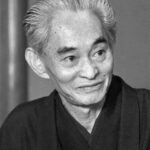
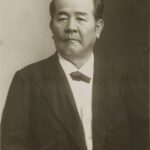
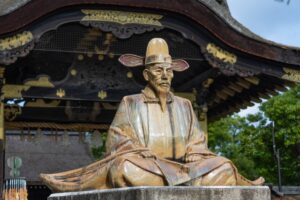
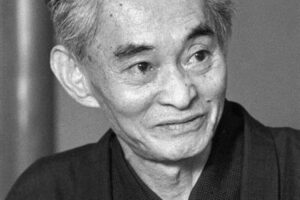
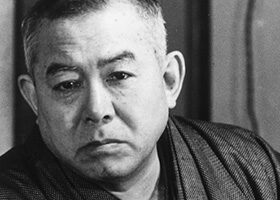
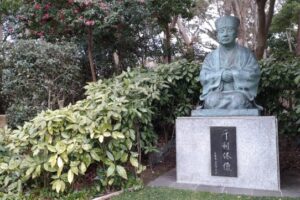
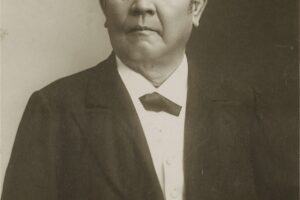
コメントを残す